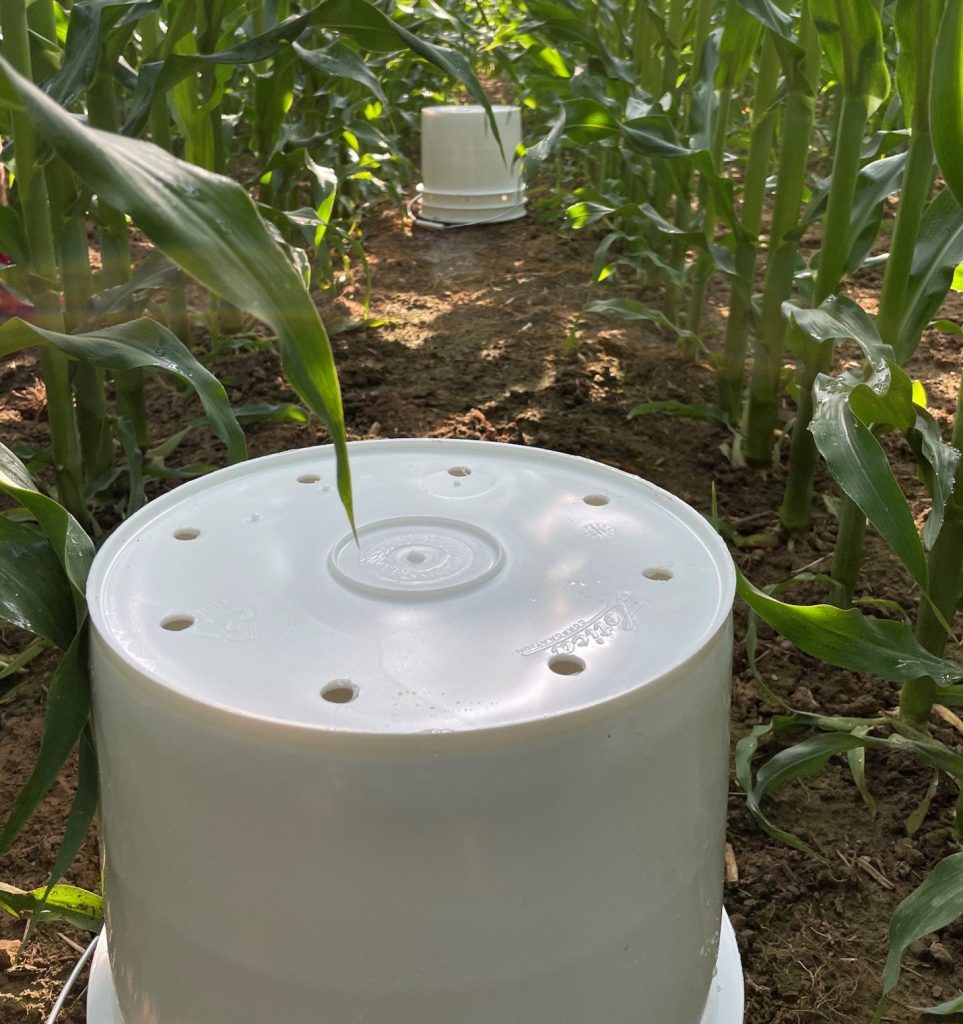By: Nancy Van Sas, Regional Communication Coordinator for Golden Horseshoe
During the spring and summer of 2023, Brant Soil & Crop Improvement Association (SCIA) led a trial documenting nitrogen (N) loss through volatilization using the methodology outlined by Marijke Van Andel in her master’s thesis Development of a Simple and Affordable Method of Measuring Ammonia Volatilization from Land Applied Manures. Holly Loucas, the current president of Golden Horseshoe SCIA and a member of Brant SCIA’s board, spearheaded this pilot project, adapting and tweaking the thesis methodology and testing it within various field conditions with the assistance of fellow Brant SCIA Directors participating in the data collection.
According to Loucas, “The hypothesis behind this study was that we wanted to test if we could use dosimeter tubes to measure N losses from volatilization (ammonia) directly in farmer’s fields”. To carry this out, “we used the protocol described in Marieke’s MSc thesis from the University of Guelph and the environment calculations that she developed to convert ppm N loss measured by the dosimeters into lbs/N loss from each field.” That is exactly what Brant SCIA did, tested the ammonia losses when commercial fertilizers were applied to mainly wheat and corn fields during the 2023 growing season.
The Process
As implied by Marijke’s thesis title, the process of collecting data using the dosimeters was relatively easy to do. Two dosimeters were placed in each field location, with one dosimeter reading the actual amount of N loss through the process of volatilization, with the second documenting N loss in the same field when subjected to wetter conditions. To simulate this wetter environment, a 500 mL bottle of water was added part way through the study to ensure the soil was sufficiently wet to trigger volatilization, especially during our dry period this past year.
The pilot field locations were throughout Brant County, in various soil types and where different practices of applying commercial fertilizer were being implemented. Buckets with holes drilled in the base were used to protect the dosimeters during the study, while still permitting it to capture the volatilization occurring. Readings were taken daily recording the ammonia loss, temperature, precipitation, and wind speed. The dosimeters would last anywhere between 7 days to 3 weeks, partially due to the saturation of the dosimeter with ammonia.

In every good research project, positive and negative controls were utilized to ensure that the documented ammonia losses were indeed occurring throughout the trials. During the 5-day control period, zero remained zero, which was very encouraging that the pilot worked. The control of broadcast urea applied lost a total of 32 lbs of N, equaling on average 6 lbs per day. The broadcast urea applied control with 500 mL of water showed very similar results of 32 lbs of loss over the 5 days. The noted difference within the control was with the coated urea broadcast on the surface, where a total of only 9 lbs of N loss occurred over the 5 days, equally on average 2 lbs of N loss per day.
The results of this pilot dosimeter trial had participants learning more than they had expected. The results of this pilot will be available at the Brant annual general meeting (AGM) in January, as well as through the Ontario SCIA website within the coming months.
Brant SCIA will be undertaking this study during the 2024 season to further document N losses under different field and weather conditions. Brant SCIA is looking for other local associations to participate in expanding this pilot into an Ontario-based research project. The study is simple, yet effective in documenting N loss through volatilization. Please reach out to Holly Loucas at holly.loucas@corteva.com if your county is interested in participating in this trial.
